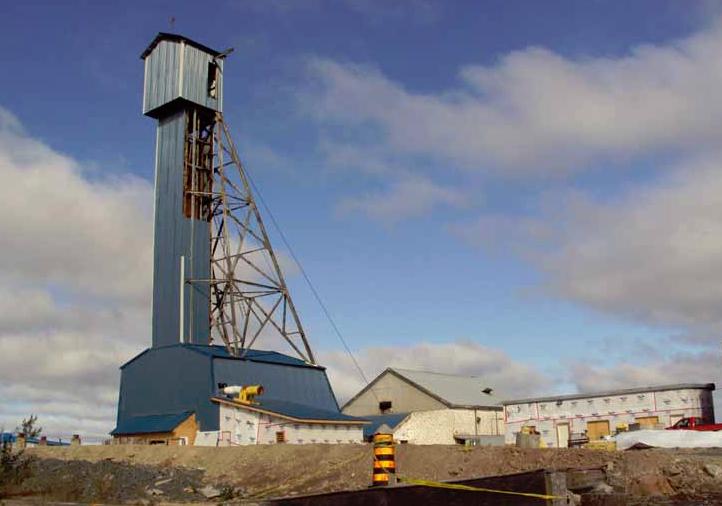
The location of Detour Gold Corporation’s Detour Lake project makes it an excellent candidate for relatively inexpensive development, which is coming to fruition at an impressive pace.
Detour Gold Corporation is a Canadian gold exploration and development company with a primary focus to develop its Detour Lake property on the Abitibi Greenstone Belt in northeastern Ontario. The site had been previously mined from 1983 to 1999, mainly by Placer Dome, producing 1.8 million ounces of gold, but it was shut down when it was no longer economical under then-depressed gold prices.
Detour Gold’s president and CEO, Gerald Panneton, has been a geologist in the mining industry for more than two decades, much of that time spent working with major precious metal companies such as Barrick Gold in Canada, but with experience in finding and developing mines as far afield as China and Tanzania also under his belt.
So when he had the opportunity to pursue the exploration and development of a gold asset at Detour Lake, Panneton was instantly intrigued. After two hectic months of due diligence, Panneton and his team signed a purchase agreement with Pelangio Mines Inc. in August 2006 to acquire a 100 percent interest in Detour Lake. Within six months Detour Gold Corporation was staging an initial public offering that raised C$35 million. Four years later the company had a market capitalization of approximately C$1.2 billion.
“It’s all about the quality of the asset,” Panneton says. “When we first looked at it, we saw that the potential was there to find a lot more than the existing 1 million ounces near the surface. I personally thought we could easily define 5 million ounces with bulk mining open-pit potential.”
The feasibility study announced in May 2010 showed the potential for 16 years of mine life, and average gold production is expected to be about 649,000 ounces annually at a total cash operating cost of US$437 per ounce. The study contemplates using a conventional gravity, cyanidation and carbon-in-pulp processing facility initially operating at 55,000 tpd and ramping-up to 61,000 tpd.
Once construction is completed, the company believes it can operate the mine at a cost-effective level, thanks in part to the open-pit approach and the proximity to existing infrastructure, among other things. The fact that hydroelectric power is close by and available is a major plus for the project in terms of cost savings. The low-cost hydroelectric power will be used as an energy source for the SAG [semi-autogenous grinding] and ball mills and other mine machinery. The mine site is within 180 kilometers of a hydroelectric dam, Panneton notes, which not only boosts the mine’s profile but also aids in its sustainability. “If you put this same project in Nevada [i.e., if the project were operating with diesel generators], the operating costs would go up dramatically just because of the power costs.”
The main construction period is estimated at 27 months followed by plant commissioning estimated to commence in the first quarter of 2013—extremely fast by industry standards, notes Panneton. “A lot of projects don’t progress nearly that quickly, and certainly projects of this scope almost never come on line that fast.”
Following receipt of the provincial permit to commence construction and the powerline permit, a 1,000-man camp has been constructed. The construction contract for the transmission line was awarded to Detour Lake Constructors in December 2010, a partnership led by Peter Kiewit Infrastructure Co. with Moose Cree Constructors Inc. (Moose Cree First Nation), New Post Constructors LP (Taykwa Tagamou Nation) and Wahgoshig First Nation as partners. DLC has started the clearing of the right-of-way in preparation for installing the first 135 kilometer segment of the powerline from the site to Island Falls power station.This first powerline segment is scheduled to be completed in the fall of 2011. In addition, three of the five 1.2 mega watt units for the temporary power station have been installed.
The plant site excavation is progressing on schedule with the first pour of concrete during the first quarter of 2011. These activities will be followed by steel erection in the second and third quarter of 2011 and with the process plant building enclosure in the last quarter of 2011.
In early May this year Detour Gold announced finalization of an agreement with Caterpillar Financial under which Cat Financial will underwrite US$105 million in mobile fleet equipment financing to fund the acquisition of 23 Cat 795F - 322-tonne haul trucks and ancillary equipment to be supplied by Toromont Industries Limited (a Cat dealer in Ontario).Delivery of the mobile fleet is expected to commence in mid-2011 and be completed in early 2013.
There are only a handful of deposits in the world capable of producing 600,000 ounces of gold annually with investments of approximately C$1 billion, and Detour Lake is one of them.
“Gold remains a precious and valuable metal, and the supply is decreasing worldwide,” Panneton says. “I personally believe that gold prices could continue to escalate over the next year or two. The timing is right for us.”













